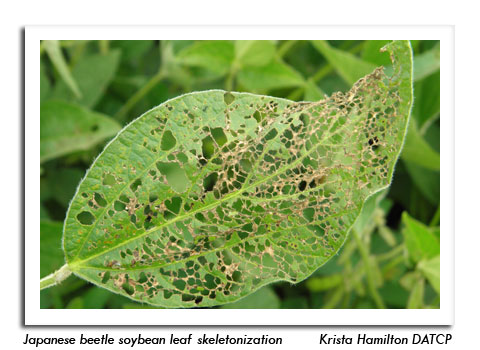
 |
|
|
Soybeans
Volume 58 Number 14 Date 08/08/2013 SOYBEAN APHID - Densities have increased to economic levels in a few fields since late July. Four of six fields sampled in the Cataract and Tomah areas of Monroe County in the past week had very high average counts of 269-587 aphids per plant on 100% of the plants. Populations in an Oconto County field were just below-threshold at 212 aphids per plant. Results of the summer aphid survey currently under way suggest populations are still low in the majority of Wisconsin soybean fields, but may be rapidly increasing in response to recent mild temperatures. Soybean aphids reproduce faster in cooler environments, with the greatest population growth occurring at temperatures of 70-80°F. Foliar treatment, if required, is most effective when applied during the R2-R4 (full bloom to full pod) stages. JAPANESE BEETLE - Light to moderate (2-15%) defoliation is common in soybeans statewide. Populations appear to be lower than last year in most locations and treatment has not been justified for any field sampled as of August 7. The economic threshold for Japanese beetle and other leaf feeding soybean pests is 20% defoliation between bloom and pod fill. -- Krista Hamilton, DATCP Entomologist 




|
|
|